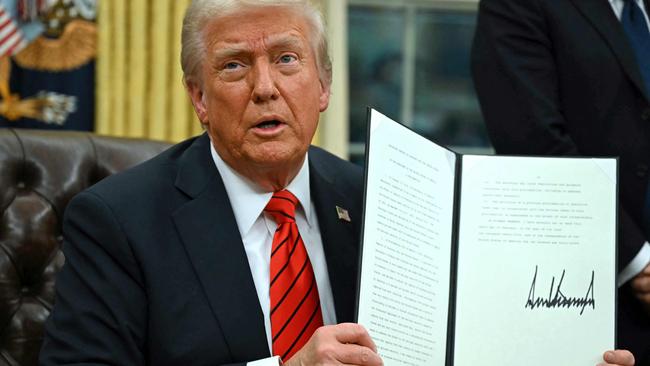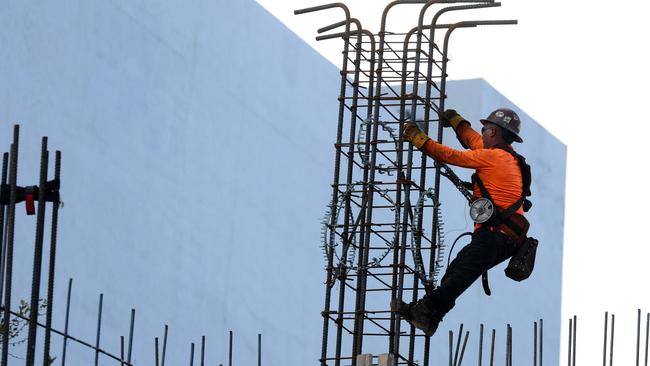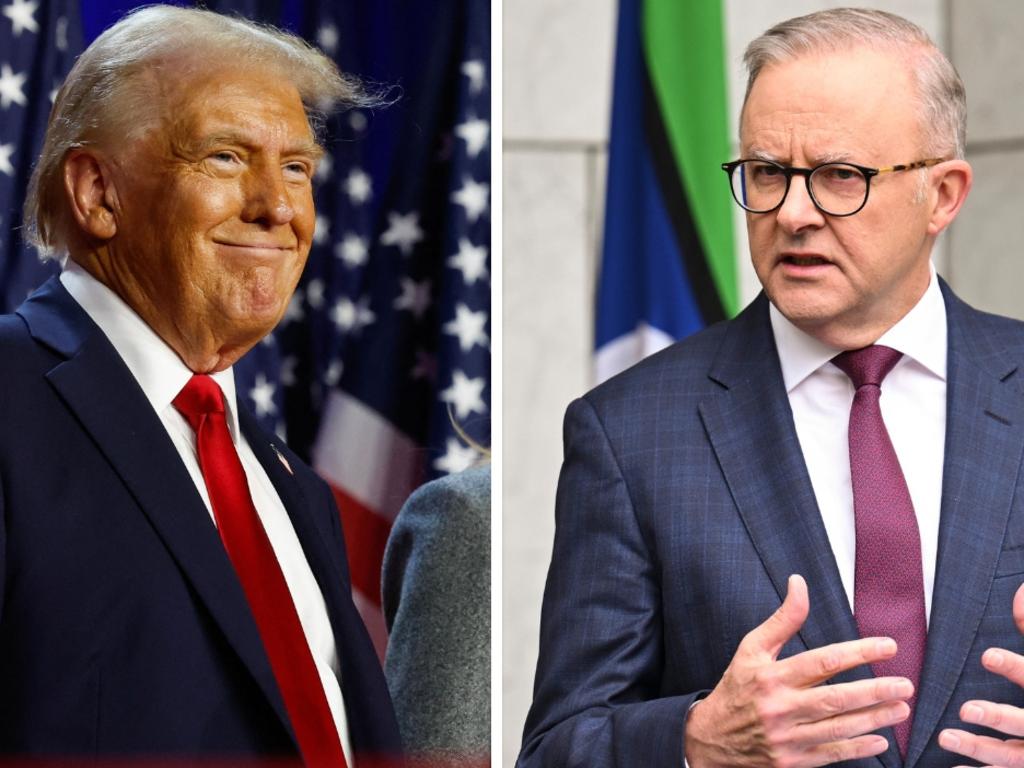This round of tariffs won’t be averted by phone calls
He also said he plans to make an announcement about reciprocal tariffs on Tuesday or Wednesday. “Very simple, they charge us, we charge them,” Trump said Sunday. Those will go into effect “almost immediately,” Trump said.
“Tariffs are going to help. Tariffs are going to make it very successful, ” Trump said as he previewed the new levies on Sunday afternoon to reporters flying with him aboard Air Force One en route from Florida to Louisiana, where the president planned to watch the Super Bowl.
The reciprocal tariffs plan will be applied to all trading partners, Trump said, but some countries that already charge similar tariffs on American goods that the US charges on their products may not see much change. Steel and aluminium tariffs will apply to every nation exporting the metals to the US
Previously, the president has also pledged that the US would impose tariffs on computer chips, pharmaceuticals, copper, oil and gas imports as soon as mid-February.
Trump delayed his most aggressive tariff threats on imports from Canada and Mexico last week, but those close to him had been warning that more duties were on the way – and they won’t so easily be averted.
Trump went right up to the brink of imposing 25 per cent duties on products from the two largest US trading partners. He hit the pause button just hours before the tariffs were expected to go into effect, after striking deals related to immigration and fentanyl smuggling.
Ten per cent duties on China – in addition to tariffs already imposed – remain in place, though they too could be paused if “serious headway” is made on fentanyl when Trump and Chinese leader Xi Jinping next speak, an administration official said. That call was supposed to happen last week but has been delayed without explanation.

Regardless of the outcome of those tariff disputes, current and former Trump administration officials say they remain only a small slice of his trade agenda.
There are “punitive tariffs” like the ones recently threatened with Canada, Mexico, China and Colombia over immigration and drug-smuggling issues, said Sen. Bernie Moreno (R., Ohio), a Trump ally in the Senate. Additionally, there will be “structural, long-term tariffs,” he said.
That category includes the tariffs Trump plans to levy on steel and aluminium imports on Monday. Trump has also threatened duties on semiconductors, pharmaceuticals and other products critical to national security.
His senior economic advisers have drawn distinctions between tariff threats that are aimed at nontrade outcomes – such as fentanyl and migration – and those that address US trade irritants, such as foreign governments subsidising their firms, discriminating against US companies or running large, persistent trade surpluses with the US
Those tariffs won’t be avoided with just a few phone calls. “The structural tariffs are going to be a reality,” Moreno said.
There is also a third and perhaps less-known use of tariffs potentially on the way, senior officials say. Trump has floated across-the-board tariffs of 10 per cent to 20 per cent on virtually all imports as a tool to raise revenue, in theory helping offset the tax cuts that Republicans are hoping to push through Congress as soon as this month.

Trump on Friday hinted to reporters he is leaning toward using a “reciprocal” tariff action, instead of his across-the-board proposal.
“They charge us, we charge them, it’s the same thing,” Trump said of his reciprocal tariff proposal, which he floated to House Republicans earlier in the week. “I seem to be going along that line, as opposed to a flat-fee tariff.” Congressional Republicans are largely on board with the use of tariffs to address structural trade issues, such as subsidies and discrimination. But they raised some questions about Trump’s plans to use duties to raise revenue.
“I’ve heard figures of almost $1 trillion in revenue or replacing the income tax, and I’m just not seeing it,” Sen. Ron Johnson (R., Wis.) told US Trade Representative nominee Jamieson Greer at his confirmation hearing last week. Greer conceded that the administration is “not in a position to, tomorrow, fund the government using tariff revenue,” though tariffs were an important revenue source in US history, particularly in the 19th century.
Many free-trade oriented Republicans in Congress, such as Johnson, are eager to give the president a lot of leeway on tariffs. Democrats in border states, meanwhile, say even the threat of tariffs hurts their constituents. “This action was incredibly disruptive and alarming” for Vermont businesses, said Sen. Peter Welch (D., Vt.), who said he heard from over 100 companies in his state about the pain that tariffs on Canada would impose.
EU, China strategize China last week announced a 15 per cent tariff on less than $5 billion of its US energy imports and a 10 per cent duty on American oil and agricultural equipment, shortly after the new US tariffs on China took effect. Beijing also imposed export restrictions on some critical metals used in electronic, aviation and defence industries.
But the Chinese tariffs won’t take effect until Feb. 10, suggesting that Xi is leaving room for talks with Trump. And China has made progress toward reducing its reliance on US products such as medical devices, potentially enhancing its leverage this time around.
Beijing’s response so far shows Xi’s intention to both project strength and mitigate significant repercussions to the Chinese economy. “Their retaliation shows how prepared they are,” said Wendy Cutler, vice president at the Asia Society Policy Institute and a former trade negotiator. “They have a lot of tools in their arsenal.” New tariffs from Washington would be facilitated by the expected arrival in coming weeks of Commerce Secretary nominee Howard Lutnick, who would lead the trade agenda, and Greer, who would do the legal work to implement trade actions.
In addition to tariffs on products that Trump previewed last week, such as semiconductors, Trump’s aides and allies warn that the European Union and South Korea also are in the firing line because of taxes, regulations and penalties they have imposed on US tech companies such as Alphabet’s Google.
“I think Europe is in for a massive trade war,” said Robert O’Brien, Trump’s first-term national security adviser. “I do not believe the president is going to put up with this type of action against America’s biggest companies.” Trump has long complained that the US buys more from the bloc than it sells to it, and said last week tariffs on the EU “will definitely happen.” But Trump’s decision to pause tariffs on Canada and Mexico suggests that his ultimate goal isn’t imposing tariffs, several European officials and diplomats said.
“I think it reinforces the sense on this side of the Atlantic that ultimately he wants to negotiate,” an EU diplomat said. The biggest surprise was how quickly deals with Canada and Mexico were reached, the diplomat said, adding, “Everybody had expected there to be a bit more haggling.” Canada, Mexico on the clock Senior Mexican officials are racing against the clock to show that they can step-up efforts to curb fentanyl smuggling and US-bound migration, Trump’s demands for permanently waiving off his 25 per cent across-the-board tariffs.
Mexican President Claudia Sheinbaum agreed to deploy 10,000 National Guard troops along the 2,000-mile border, which senior Mexican officials believe, in addition to the more than 30,000 troops assigned to contain migrant flows, could appease Trump. “Troop deployment is something that Trump loves,” one Mexican official said.
Mexico’s military and federal law-enforcement agencies have boosted checkpoints along key highways and border hot spots through the country, contributing to a drop of more than 80 per cent in illegal border crossings in recent months. But curbing fentanyl smuggling is more challenging, because the drug can be hidden in small quantities and is usually transported by US nationals hired by gangs to work as “mules” along the US-Mexico border.
To America’s north, Canadian Prime Minister Justin Trudeau on Friday convened an economic summit in Toronto to huddle with business and labour leaders. “The 30-day extension that we’ve been given is something that we need to use,” Trudeau said.
Canada’s finance minister, Dominic LeBlanc, will fly to Washington this week to meet with Lutnick, one Canadian official said. Canadians have also been seeking advice and insight from people close to Trump’s orbit, including former trade adviser Robert Lighthizer.
O’Brien and other Trump allies say episodic tariff threats are likely to crop up whenever Trump feels slighted by a foreign government – even over nontrade issues. But in those situations, Trump is more willing to relent on the tariffs if his demands are met, O’Brien added.
“He likes to go big with the leverage to get what he wants for America,” he said.
Dow Jones





President Trump has signed an executive order imposing 25 per cent tariffs “without exemption or exception” on imports of steel and aluminium, part of the structural change to the country’s trade system that the president promised on the campaign trail.